
US Postage Stamps
// Philatelic Project
// The Federal States




|
New York City, NY //
Middle Atlantic Region //
Eastern Time //
[NYC clock]
(The Big Apple) New York City, commonly abbreviated as NYC, was founded by Dutch immigrants. |
||||||||||||||||||||
|
|||||||||||||||||||||

|
Land/Water Area
rounded mi2 [km2] 303 [784] 166 [430] |
Population
(census 2010) 8,336,697 |
Population Density
per mi2 [km2] of land area 27,514 [10.634] |
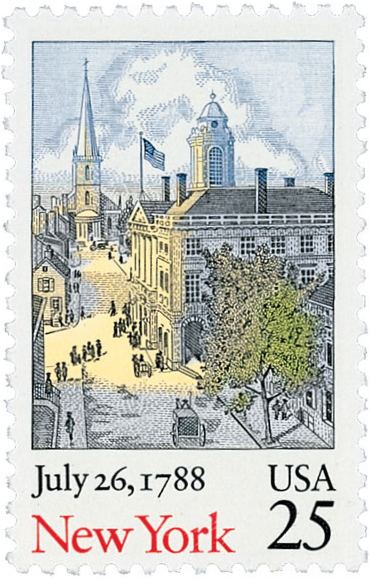
|
#2346 // July 26, 1988 // Albany, NY
New York Statehood Bicentennial
The stamp depicts Archibald Robertson's
(Scottish born painter, * 1765, † 1835) »View up Wall Street« with City (Federal) Hall and Trinity Church in New York City from around 1789
From 1785 until 1790 New York City served as the national capital. The first US President George Washington was inaugurated in 1789 at »Federal Hall« on 26, Wall Street, the seat of the Congress.
|

|
#C35 // August 20, 1947 // New York City, NY
Air Mail Stamp New York Skyline Statue of Liberty, Steam tugboat on Hudson River and Manhattan skyline, Lockheed Constellation (1943, "Connie") |
| Brooklyn Bridge |
|
The suspension bridge, built in neo-Gothic architectural style, spans in a total length of 5,989 feet (1.825 m) the East River linking the boroughs of Manhattan and Brooklyn. The beginning of the construction was on January 3, 1870 and it took 14 years to complete at a cost of US$ 15 million (present-day US$ 320 million).
The bridge was initially designed by German-American civil engineer John Augustus Roebling (* 1806, † 1869). After his sudden death his son Washington August Roebling (* 1837, † 1926) continued the bridge project. When he suffered from the "caisson-disease" as a result of the works on the pillars of the bridge his wife Emily Warren Roebling (* 1843, † 1903) supervised the construction work and forced the completion of the project. On inauguration day, May 24, 1883, about 150,000 people
and 1,800 vehicles crossed the bridge. Prototype for the Brooklyn Bridge was the Kettenbrücke [chain bridge] which spanned the Regnitz River (1829 - 1891) on four chains in the Franconian city of Bamberg. In 1830, Johann August Röbling, a graduate of the "Königlich polytechnisches Institut" in Berlin, Prussia, travelled to Bamberg to study the construction and to gain experience of that new suspension bridge. |
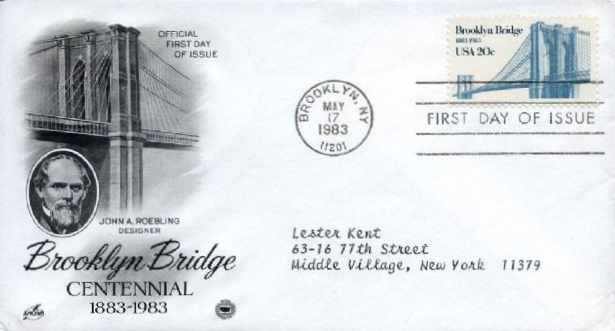
|
|
#2041 // May 17, 1983 // Brooklyn, NYC
First Day Cover Brooklyn Bridge Centennial on cachet addressed cover more ... |
| Statue of Liberty |
|
The colossal sculpture in neoclassical style "Statue of Liberty Enlightening the World", a universal symbol of freedom and democracy, was a gift of friendship from the people of France to the people of the United States of America in recognition of the friendship established during the American Revolution War. In 1875 the French sculptor Frédéric-Auguste Bartholdi (* 1834, † 1904) started to design the monument in cooperation with Alexandre Gustave Eiffel (* 1832, † 1923) who was responsible for the massive iron pylon and the skeletal framework. The statue was completed in France in July, 1884 and arrived in New York City's harbor in June, 1885 on board the French frigate "Isere", reduced to 350 individual pieces and packed in 214 crates. The statue was re-assembled and placed upon a granite pedestal in four months time, inside the courtyard of the star-shaped walls of Fort Wood on Bedloe's Island located in New York City's harbor. In 1956, the island's name was changed to Liberty Island.
The Statue of Liberty was dedicated on October 28, 1886, and designated as a National Monument in 1924. In 1984, the United Nations designated the Statue of Liberty as a World Heritage Site. Between 1984 and 1986 "Lady Liberty" was closed to the public and restored for her centennial in 1986. "Lady Liberty", made of 31 tons of copper and 125 tons of steel, has a height of 151 feet and one inch (46 m), the height from ground to torch is 305 feet and one inch (93 m). |
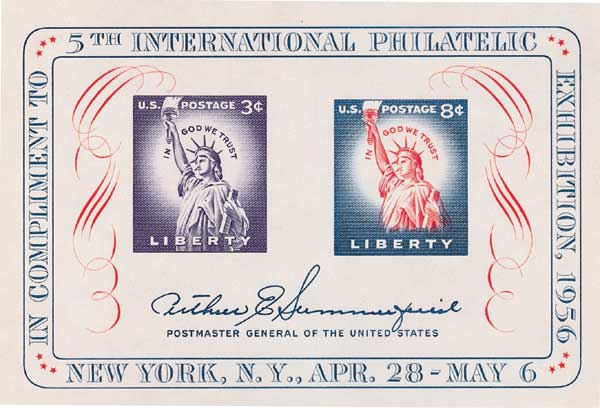
|
#1075 // April 28, 1956 // New York City, NY
Souvenir Sheet Fifth International Philatelic Exhibition FIPEX New York Coliseum, April 28 - May 6, 1956 Statue of Liberty |
|
Over the years numerous postage stamps in panes, coils, and booklets with different
perfs and gums have been produced depicting various images of "Lady Liberty". |
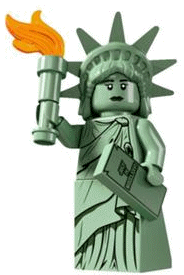
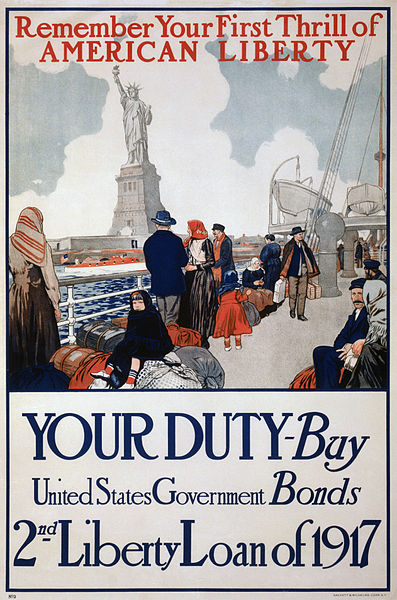
|
|
Contemporary government poster using the
Statue of Liberty to promote the sale of Liberty Bonds*. ( *War bond that was sold to support the allied cause in World War I) |
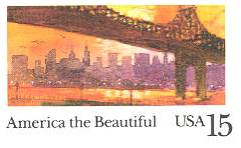
|
|
#UX137 // November 8, 1989 // New York City, NY
Stamped Postal Card America the Beautiful Series 59th Street Bridge and Manhattan Skyline, NYC |
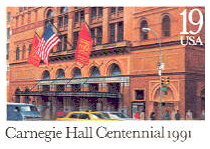
|
|
#UX154 // April 1, 1991 // New York City, NY
Stamped Postal Card Carnegie Hall in Midtown Manhattan, NYC Centennial Front side and main entrance of one of the most prestigious concert venues in the world for both classical and popular music. Designed by architect William Burnet Tuthill (* 1855 , † 1929) in Italian renaissance architectural style and built by philanthropist Andrew Carnegie (* 1835 , † 1919) in 1891. |
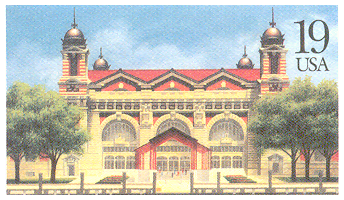
|
|
#UX165 // May 11, 1992 // Ellis Island, NYC
Stamped Postal Card Ellis Island National monument Centennial Ellis Island Immigration Museum (since 1990) Ellis Island, located in Upper New York Bay just off the New Jersey coast, was the site of the first federal immigration station and the gateway for over twelve million immigrants to the United States from 1892 to 1954. |
| // Elmar R. Göller // All rights reserved // Contact // Publishing Information |
| modified |